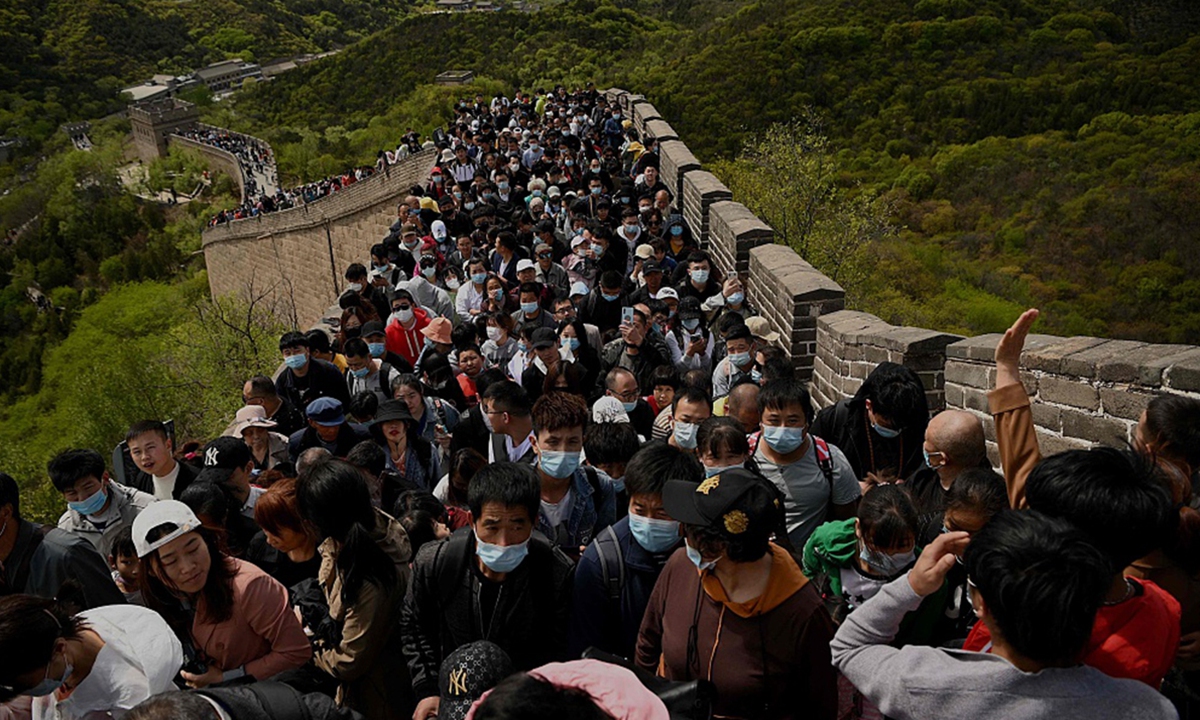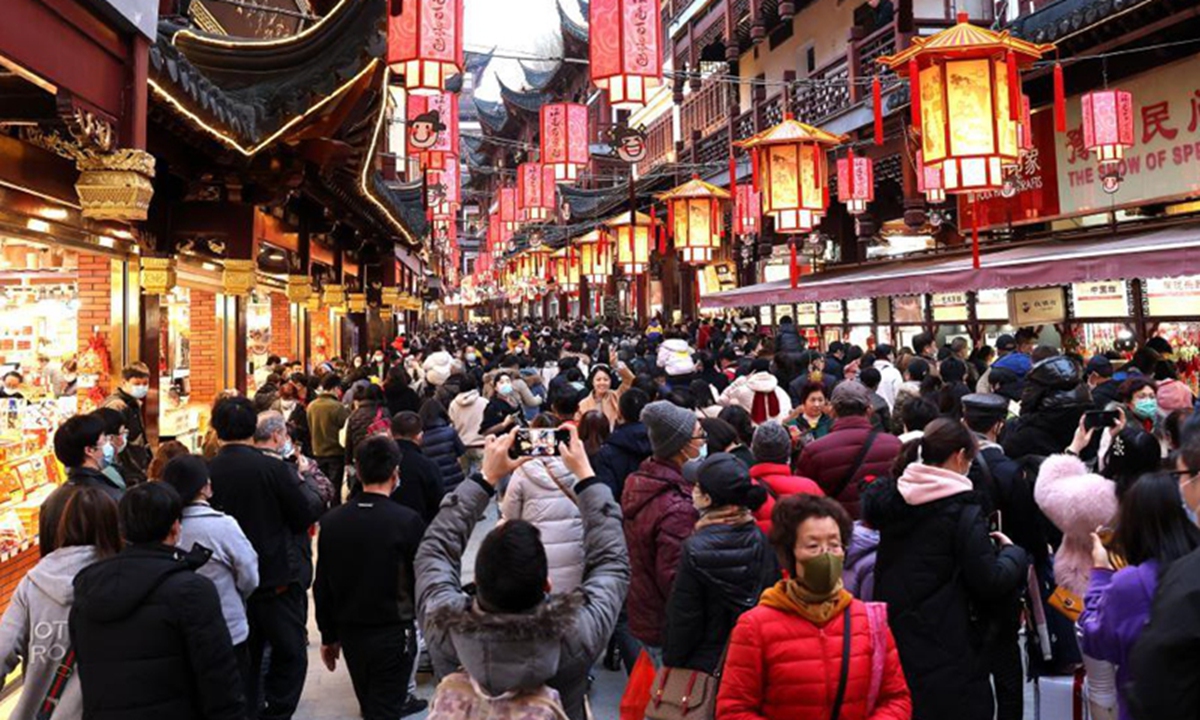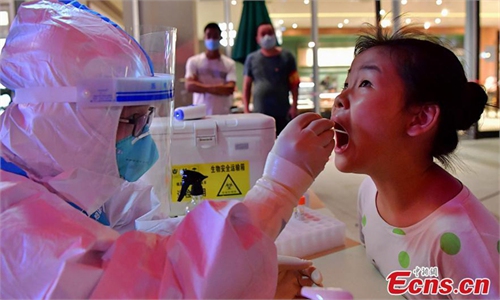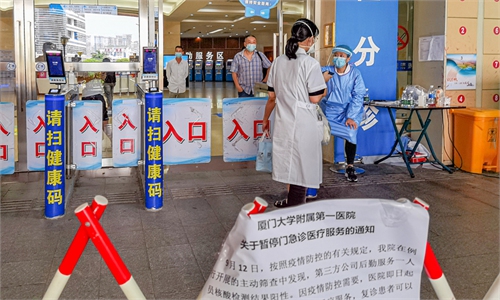
Crowds on the Great Wall in Beijing Photo:VCG
The fresh round of coronavirus resurgence in East China's Fujian Province arrived just when the Mid-Autumn Festival and the National Day holidays are around the corner. This has cast a shadow over the joyous mood of the Chinese people. Many are wondering: Can we still travel especially during the National Day holidays?An accurate answer depends on the actual situation of the epidemic control. However, considering the fact that the virus has not yet spread out of Fujian and the high efficiency with which other places dealt with the epidemic in the past, we have reasons to be optimistic about the opening of tourism during the National Day holidays.
This round of outbreak in Fujian began in the city of Putian and has spread to Xiamen and other places, with a strong momentum of transmission. But places like Nanjing have accumulated experiences with the Delta strain. Vigilance and capacity for prevention and control in all other regions have also increased. We should be confident that we can do much better this time. Therefore, we must attach great attention to this round of epidemic in Fujian and make all-out effort to prevent its further spread. But we have to maintain the collective calm that we have built up. Such a big country like China cannot be frightened by a very local outbreak in Fujian. It is unnecessary if many people are afraid of traveling to places where there are no outbreaks at all.
In particular, local officials should not be panicked. They shouldn't advocate "staying put during the holidays" easily, nor should they turn such advocacy into a requirement. Unless required by the Joint Prevention and Control Mechanism of the State Council, it is quite debatable whether local governments should implement the policy of avoiding unessential travels outside provinces, municipalities (cities), or autonomous regions during the two upcoming holidays.
The longer the prevention and control is to last, the more science and precision should be taken into account. It is wrong to magnify this "just in case" out of panic. People still have to live their daily lives. Many people in the tourism industry and related services sectors need to earn money for their family. Different situations cannot be treated in the same single way. We must pursue balance, and our dynamic zero-case route is about protecting daily life and making it safe with as little disruption as possible.
We need to gradually enhance the accurate efficiency of our dynamic zero-case route. We should avoid a complete halt on a large scale. We have to strive for early detection of each outbreak. We also need to make sure that we can contain it faster so that it will cause less harm to the society.
China is capable of dynamically clearing all COVID-19 cases while maintaining a generally normal rate of economic growth at the same time. This has guaranteed most people's normal life to the greatest extent possible. It will be prejudicial if we make the great part of our society stop functioning and sacrifice our economy each and every time we try to clear COVID-19 cases dynamically.

Tourists visit the Yuyuan Garden scenic area in east China's Shanghai, Feb. 17, 2021. Shanghai recorded over 4.92 million tourist visits during the seven-day holiday since Feb. 11, bouncing back to 96 percent of the number in the Chinese Lunar New Year holiday in 2019 before the COVID-19 epidemic, according to the city's administration of culture and tourism. Over 81 percent of the visitors were locals, and the total tourism revenue reached 5.67 billion yuan (about 877 million U.S. dollars).Photo:Xinhua
In some parts of China, people are encouraged to spend their holidays without traveling outside where they are. This has led to a tense atmosphere in the whole society when there is no information showing that the outbreak in Fujian has spread to other regions of the country. In addition, the National Day holidays are of vital importance to China's consumption. Therefore, we call on the authorities on the national level to regulate and guide, in a timely manner, this trend that has occurred in many places. It is China's advantage over most countries to have an overall and prudent plan. And we should enhance such an advantage every time we deal with a new wave of the epidemic outbreak. How we spend the upcoming Mid-Autumn Festival and National Day holidays will put us to the test again.Keep original travel plans, do not go to those announced medium-risk and high-risk areas, wear facial masks during trips, and avoid overcrowded places to enjoy the upcoming holidays while not getting relaxed on epidemic prevention - those are advices from several epidemiologists in their interviews with the Global Times. We encourage everyone to do what the experts have suggested if the new outbreak does not spread seriously before the National Day holidays.


